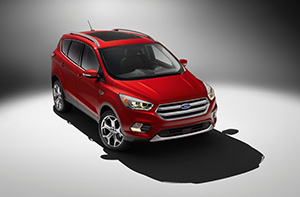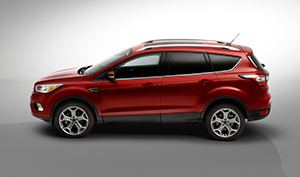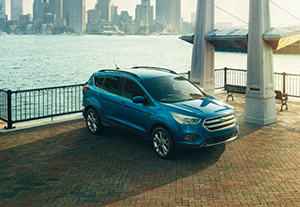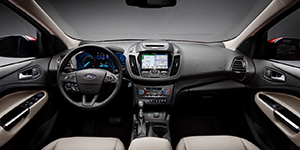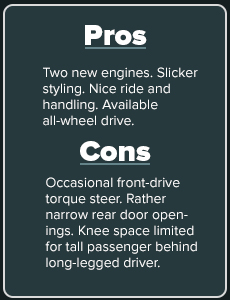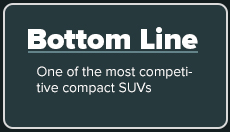2017 Ford Escape
The 2017 Ford Escape has
revised styling, two new engines and more connectivity.
Prices: $23,600-$29,100
The Ford compact Escape is the automaker's second best-selling vehicle
behind its mighty F-Series pickup.
The new Escape is improved because it's up against two strong
rivals--the Honda CR-V and Toyota RAV4. They outsell it, but not by
huge amounts.
The 2017 Escape has new front and rear fascias that make it look more
imposing. It comes as the S, mid-range SE and top-line Titanium with
front- or all-wheel drive. I tested the Titanium with front drive,
which had occasional torque steer under hard acceleration.
List prices are $23,600 for the base S, $25,100 for the SE and $29,100
for the Titanium. Front-wheel-drive is standard. All-wheel drive is an
extra $1,750.
The new engines are an EcoBoost turbocharged 1.5-liter four-cylinder
with 179 horsepower and a 2-liter EcoBoost with a twin-scroll turbo
that generates 245 horsepower and costs an extra $1,295.
Carried over is a 2.5-liter four-cylinder engine with 168
horsepower.
I recommend either of the new engines. All three work with a responsive
six-speed automatic transmission, with responsive paddle shifters near
the steering wheel.
Estimated fuel economy with the carryover engine and
front-drive is 21 city and 29 highways. The EcoBoost engines
with front-drive deliver in the low 20s in the city and the high 20s on
highways. Fuel economy is a few miles per gallon less with all-wheel
drive.
The fuel-saving Auto start-stop feature is standard with either
EcoBoost engine. It shuts off the engine when it senses that the Escape
is sitting idle. The engine instantly starts when the brake pedal is
released. I soon became used to the feature and found it to be a good
one.
Getting in or out of the Escape doesn't call for much more effort than
entering or leaving a car, although occupants sit higher than in an
auto.
The interior is quiet, backlit gauges can be quickly read and controls
are easy to use, although there is almost too much of a small and large
mixture of them.
There are lots of connectivity and technology options. They include
adaptive cruise control, forward collision warning and Sync Connect.
Among other things, Sync Connect lets you lock the Escape from a
distance and, when properly equipped, start the vehicle.
My test car's front seats provided good side support in curves, which
could be taken in almost a sporty manner. The steering was quick and
precise, if a little rubbery, and the ride was firm, but not
punishing. The brake pedal has a nice linear action.
There's a good amount of cargo space, and the hatchback has a low, wide
opening for easy loading. Flipping the rear seatbacks forward greatly
increases cargo space. The cabin has a decent number of storage areas.
The interior is somewhat tight, but not cramped. After all, this is an
easily maneuvered compact SUV, not a big one. But a tall passenger
behind a long-legged driver doesn't have much legroom to spare, and the
center of the rear seat is too stiff for comfort. Thus, we've got a
comfortable four-seater here, not a five-seater, as Ford claims.
Changes to the new Escape promise to keep it among the leading small
SUVs. It fits nicely into today's booming small SUV and crossover
markets.

